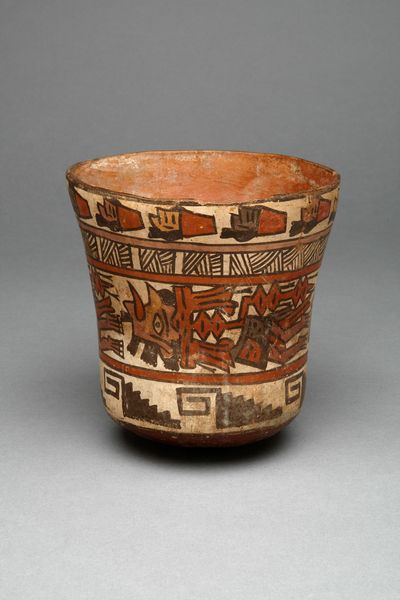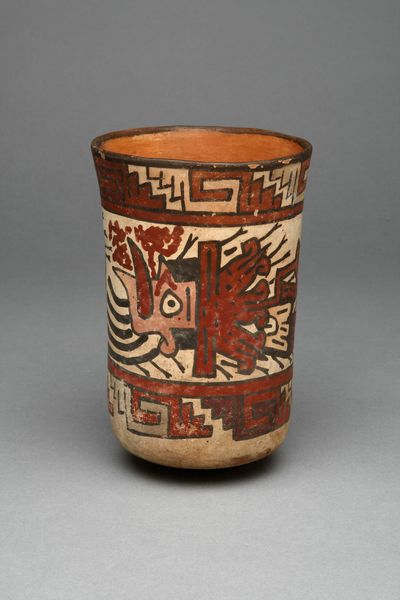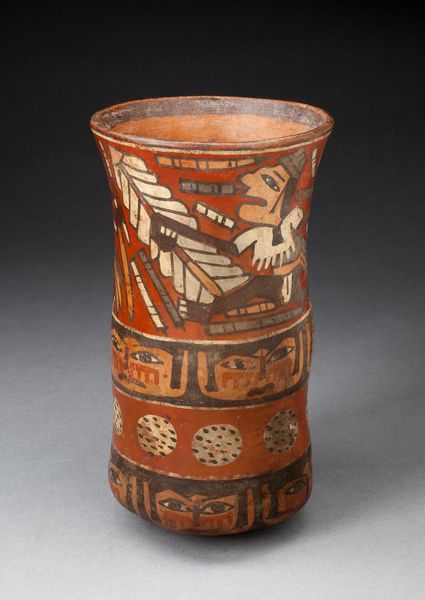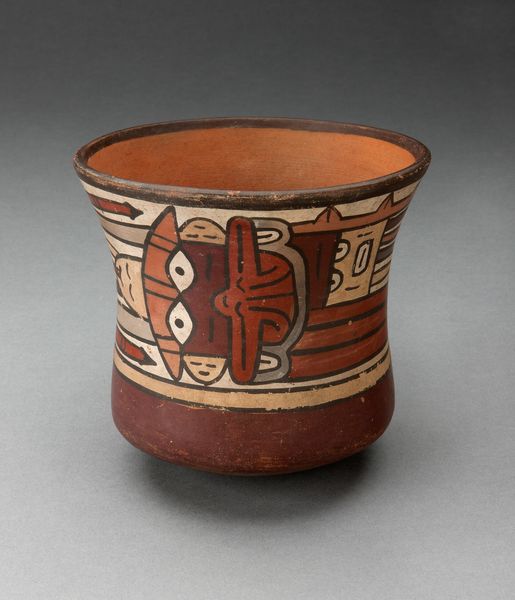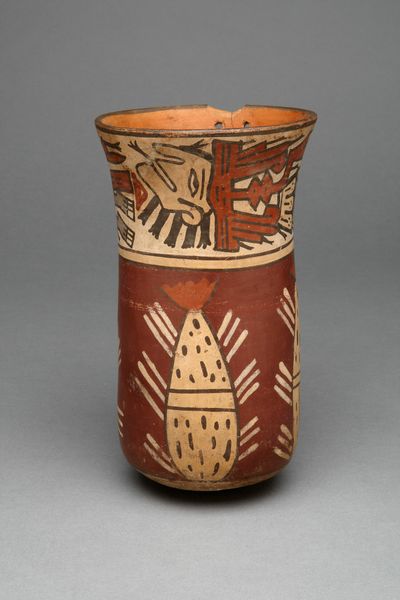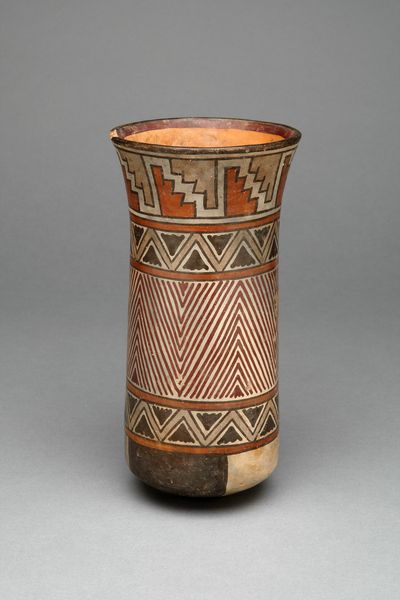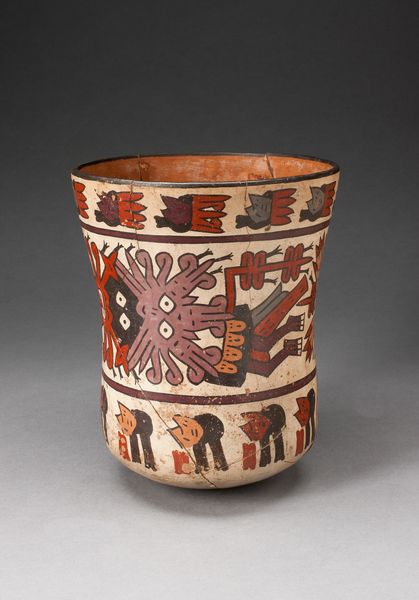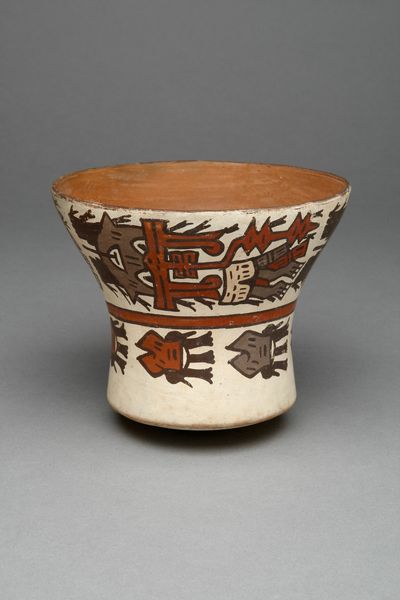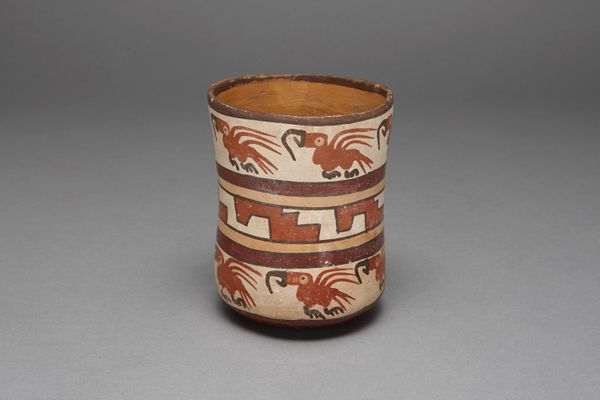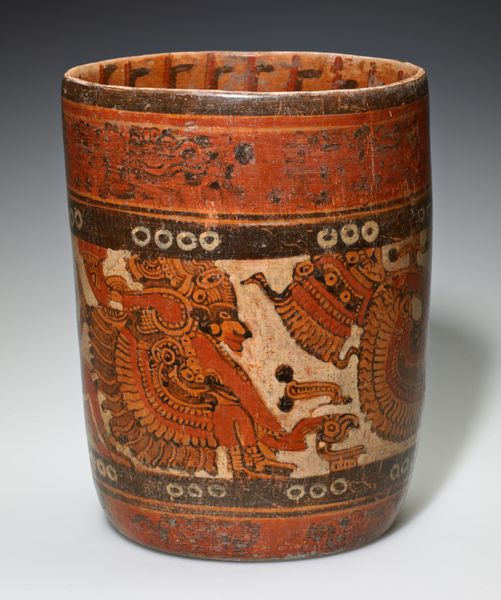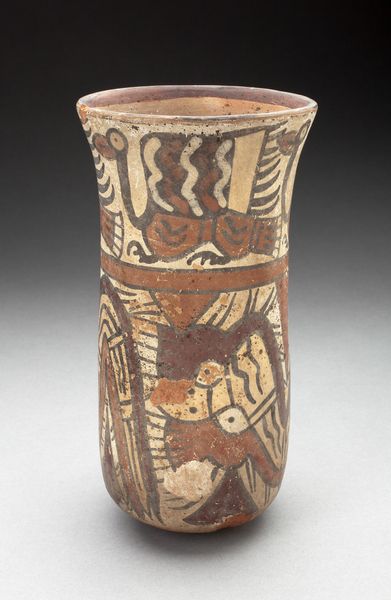
ceramic, earthenware
#
ceramic
#
earthenware
#
geometric
#
geometric-abstraction
#
indigenous-americas
Dimensions: 15.9 × 11.1 cm (6 1/4 × 4 3/8 in.)
Copyright: Public Domain
Curator: Immediately, the energy strikes me – there’s something powerful in these seemingly simple, bold shapes, wouldn't you agree? Editor: Indeed. We're looking at a "Beaker with Bands Containing Abstract Motifs," created by the Nazca people, dating roughly from 180 to 500 CE. It's an earthenware vessel. Beyond its obvious utility, such works offered key insights into Nazca social structures, beliefs and cosmologies. Curator: Yes, this piece pulls you into the Indigenous Americas through its geometrical repetitions! It’s intriguing how abstraction itself can become a vehicle for representation of the body, spiritual beings, or natural phenomena central to Nazca existence. What are the broader discussions shaping perceptions about ancient technologies today? Editor: Today, discussions around cultural patrimony emphasize the political roles that objects play, particularly when these cross national boundaries. How do we strike the right balance between accessibility, conservation, and the politics of indigenous representation? Curator: I appreciate the textured narratives that this pottery generates; I'm interested in the social role and visibility that this kind of production would provide its creator. What we learn from material culture and art making. This beaker could potentially be used during ceremony or celebrations for the broader population! It tells a very detailed and specific cultural narrative through artistic means, even thousands of years later. Editor: Exactly, this isn't just decoration; it's a whole cosmology made visible. One needs to also keep in mind how museums influence and shape these artistic canons from previously marginalized populations and how such platforms determine accessibility and visibility, or even what the criteria are for something considered art versus craft versus cultural artifact. Curator: Food for thought indeed. As our encounter comes to a close, I invite us all to meditate more broadly about how we frame ancient cultural producers using Western historical perspectives; what possibilities can arise as new understandings begin to decolonize contemporary scholarship in museum spaces? Editor: A stimulating point. Reflecting on this vessel reminds me of art's lasting function in social engagement across vast periods of time.
Comments
No comments
Be the first to comment and join the conversation on the ultimate creative platform.

